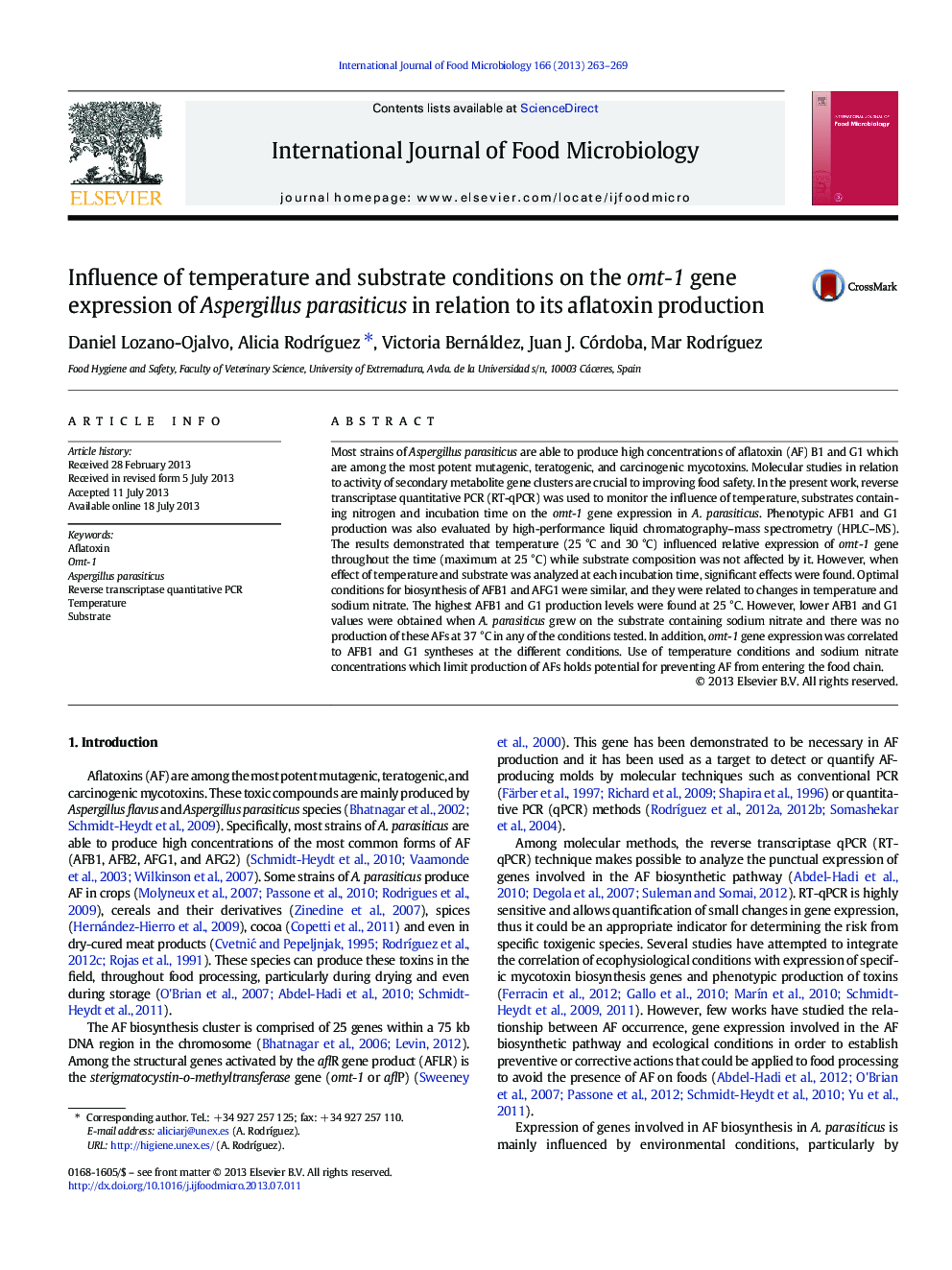| Article ID | Journal | Published Year | Pages | File Type |
|---|---|---|---|---|
| 6290152 | International Journal of Food Microbiology | 2013 | 7 Pages |
Abstract
Most strains of Aspergillus parasiticus are able to produce high concentrations of aflatoxin (AF) B1 and G1 which are among the most potent mutagenic, teratogenic, and carcinogenic mycotoxins. Molecular studies in relation to activity of secondary metabolite gene clusters are crucial to improving food safety. In the present work, reverse transcriptase quantitative PCR (RT-qPCR) was used to monitor the influence of temperature, substrates containing nitrogen and incubation time on the omt-1 gene expression in A. parasiticus. Phenotypic AFB1 and G1 production was also evaluated by high-performance liquid chromatography-mass spectrometry (HPLC-MS). The results demonstrated that temperature (25 °C and 30 °C) influenced relative expression of omt-1 gene throughout the time (maximum at 25 °C) while substrate composition was not affected by it. However, when effect of temperature and substrate was analyzed at each incubation time, significant effects were found. Optimal conditions for biosynthesis of AFB1 and AFG1 were similar, and they were related to changes in temperature and sodium nitrate. The highest AFB1 and G1 production levels were found at 25 °C. However, lower AFB1 and G1 values were obtained when A. parasiticus grew on the substrate containing sodium nitrate and there was no production of these AFs at 37 °C in any of the conditions tested. In addition, omt-1 gene expression was correlated to AFB1 and G1 syntheses at the different conditions. Use of temperature conditions and sodium nitrate concentrations which limit production of AFs holds potential for preventing AF from entering the food chain.
Related Topics
Life Sciences
Agricultural and Biological Sciences
Food Science
Authors
Daniel Lozano-Ojalvo, Alicia RodrÃguez, Victoria Bernáldez, Juan J. Córdoba, Mar RodrÃguez,
